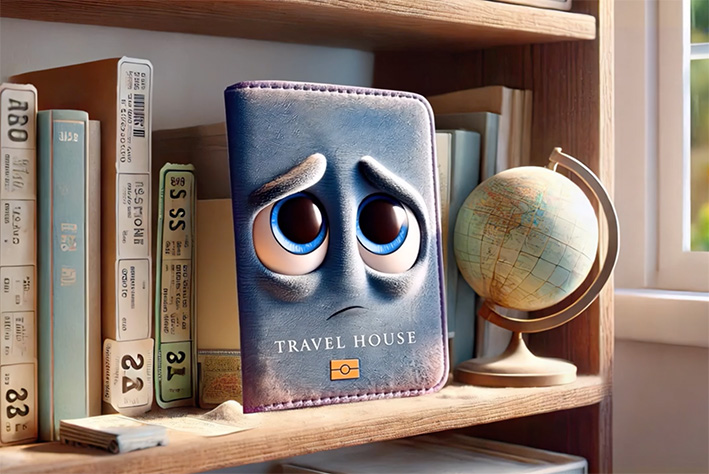Small business, big picture: What ITV’s gen-AI play tells us about thinking local

Opinion
For small businesses, AI opens the door to omnichannel strategies that incorporate TV and the prospect of using machine learning to develop media plans for regional audiences. This could reshape media mix modelling by making location a central pillar.
I’m sure it raised a few concerned eyebrows at creative agencies, but ITV’s recent push to create TV ads using generative AI for smaller, local brands points to a new era in advertising.
Yes, the initial barriers to entry were lowered some years ago with the launch of Sky AdSmart and later ITV’s Planet V, but they never resolved the issue of creative production. This has remained prohibitively expensive for smaller brands — and the costs go up further if you want to tailor the content for specific audience segments.
However, with new AI-led technologies coming to market, personalisation at scale is within the grasp for many more businesses.
Now, with ITV’s bid to make full-blown TV ads available to small and medium-sized enterprises (SMEs) — through the use of licensed gen-AI image and video tools alongside its own voiceover artists — we’re seeing a broader democratisation of the advertising landscape.
Gen AI, as we know, is not without its challenges. One key area of concern (for now, at least) is the quality of the content. While I’m pleasantly surprised that ITV’s first AI-generated ads are actually pretty decent, the top creative agencies probably don’t have too much to worry about.
Nuances like cultural context and brand identity can be difficult for AI to interpret effectively, resulting in content that feels generic or misaligned with a brand’s values.
Let’s be honest, there’s little chance that major mass-market brands are going to embrace the ITV model (especially after the Toys “R” Us debacle), but this is tantalising stuff for businesses hitherto largely confined to online — and broadly static — digital channels.
Opening doors
The option to factor in TV ads to small businesses’ media plans opens the door to new omnichannel strategies that incorporate TV to amplify impact, thanks to that medium’s scale and effectiveness. However, what’s particularly exciting is the prospect of using machine learning to develop media plans for regional audiences with calls to action tailored to particular locations.
This approach doesn’t just broaden the scope of what’s possible, it reshapes the future of media mix modelling by making location a central pillar of advertising strategies.
This is significant. Postcodes were already emerging as the new cookie for businesses in a world where data-privacy restrictions have made online tracking less reliable. It’s high time too.
UK marketers often consider our digital sector as being more advanced than that in North America, mainly due to the size of the landscape and high level of competition. However, the US and Canada have always excelled in hyperlocal marketing — a skill sharpened by the sheer scale and diversity of their territories.
US brands, for instance, frequently embed QR codes into ads for local services, directing viewers to the nearest store or service provider. This model of highly targeted, localised advertising is now, finally, likely to gain deeper traction in the UK, better connecting audiences with businesses in their area.
GPS for ad campaigns
As brands face increasing pressure to grow without significant budget increases, media planning must become more efficient.
AI, in this context, isn’t just about creating ads; it’s about using machine learning to identify niche audiences at a hyperlocal level, allowing brands to speak directly to specific groups in particular areas based on shared needs, interests or challenges.
Next, factor in the unique capabilities of gen AI to produce ad variants in a cost-effective way and you can really begin to use local strategies at scale. This approach is particularly useful for smaller brands with limited budgets, as they can create multiple versions of the same ad with US-style localised calls to action without significantly increasing costs.
Moreover, by comparing ad performance across different regions, smaller businesses can easily demonstrate return on investment, making TV ads more viable and measurable for SMEs.
You could say AI and machine learning therefore have the potential to work like a GPS for advertising campaigns, guiding businesses to the most relevant and effective audience segments with absolute precision and efficiency.
The introduction of gen AI into TV advertising brings with it the potential to transform how we think about creativity and personalisation in a post-cookie world. While big ticket, human-made campaigns will likely remain the domain of the biggest brands, for everyone else, the future of advertising may lie in the power of localised, AI and machine learning-supported content.
But we won’t know until we try— so it’s time to roll up our sleeves and begin experimenting.
 Mike Fantis is vice-president, managing partner, at DAC UK
Mike Fantis is vice-president, managing partner, at DAC UK
The future of TV ads? ITV creates two spots with generative AI




